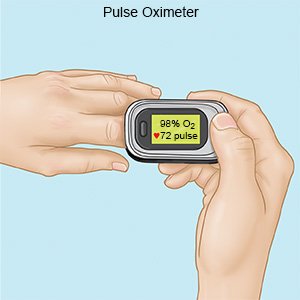Reactive Airways Disease
Medically reviewed by Drugs.com. Last updated on Aug 4, 2025.
Reactive airways disease (RAD) is a term used to describe breathing problems in children up to 5 years old. The signs and symptoms of RAD are similar to asthma, such as wheezing and shortness of breath.
WHILE YOU ARE HERE:
Informed consent
is a legal document that explains the tests, treatments, or procedures that your child may need. Informed consent means you understand what will be done and can make decisions about what you want. You give your permission when you sign the consent form. You can have someone sign this form for you if you are not able to sign it. You have the right to understand your child's medical care in words you know. Before you sign the consent form, understand the risks and benefits of what will be done to your child. Make sure all of your questions are answered.
Tests:
- A pulse oximeter is a device that measures the amount of oxygen in your child's blood.

- A spirometer measures how well your older child can breathe. He or she will take a deep breath and then push the air out as fast as possible. This test measures how much air your child is able to push out. This is called forced expiratory volume (FEV). The test results show healthcare providers how small your child's airways have become.
- Mucus samples from your child's nose or throat may be collected and tested. The results may tell healthcare providers what is causing your child's symptoms.
- Blood tests may be used to check for signs of infection or another cause for your child's symptoms.
- X-rays may be used to check your child's heart, lungs, and chest wall. It can help healthcare providers diagnose your child's symptoms, or suggest or monitor treatment for medical conditions.
Related medications
Medicines:
- Short-acting bronchodilators help open the airways quickly. They relieve sudden, severe symptoms and start to work right away.
- Long-acting bronchodilators help prevent breathing problems. They control breathing problems by keeping the airways open over time.
- Corticosteroids help decrease swelling and open the airway to make breathing easier. Your child may breathe the medicine in or swallow it as a liquid, pill, or chewable tablet.
Treatment:
- Breathing treatments open your child's airways so he or she can breathe more easily. Your child may need to use a nebulizer or an inhaler to help him or her breathe in the medicine. Ask healthcare providers for more information about these devices, and to show you and your child how to use them.
- Oxygen may be given to help your child breathe easier. He or she may need a nasal cannula (small tubes placed in the nose) or mask.
Treatment options
The following list of medications are related to or used in the treatment of this condition.
RISKS:
Infants and young children who have RAD have a higher risk of bronchial hyperreactivity as they get older. This means the airways quickly overreact to triggers by narrowing or closing. If your child has severe symptoms of RAD, he or she has a higher risk of ongoing wheezing and asthma. His or her risk for lung problems as an adult is also higher. If your child has asthma, he or she may need to use medicine often or all of the time. His or her lungs also may not grow as they should. Infants or children may stop breathing if their symptoms get worse. Talk to your child's healthcare provider about these risks.
CARE AGREEMENT:
You have the right to help plan your child's care. Learn about your child's health condition and how it may be treated. Discuss treatment options with your child's healthcare providers to decide what care you want for your child.© Copyright Merative 2025 Information is for End User's use only and may not be sold, redistributed or otherwise used for commercial purposes.
The above information is an educational aid only. It is not intended as medical advice for individual conditions or treatments. Talk to your doctor, nurse or pharmacist before following any medical regimen to see if it is safe and effective for you.
Learn more about Reactive Airways Disease
Treatment options
- Medications for Allergic Asthma
- Medications for Asthma
- Medications for Infection
- Medications for Pleuropulmonary Infection
- Medications for Pulmonary Impairment
Care guides
- Asthma
- Bronchiolitis
- COPD (Chronic Obstructive Pulmonary Disease)
- Exercise-Induced Bronchoconstriction
- Foreign Body Ingestion
- Mers (Middle East Respiratory Syndrome)
- Moderate and Severe Persistent Asthma
Symptoms and treatments
Medicine.com guides (external)
Further information
Always consult your healthcare provider to ensure the information displayed on this page applies to your personal circumstances.
